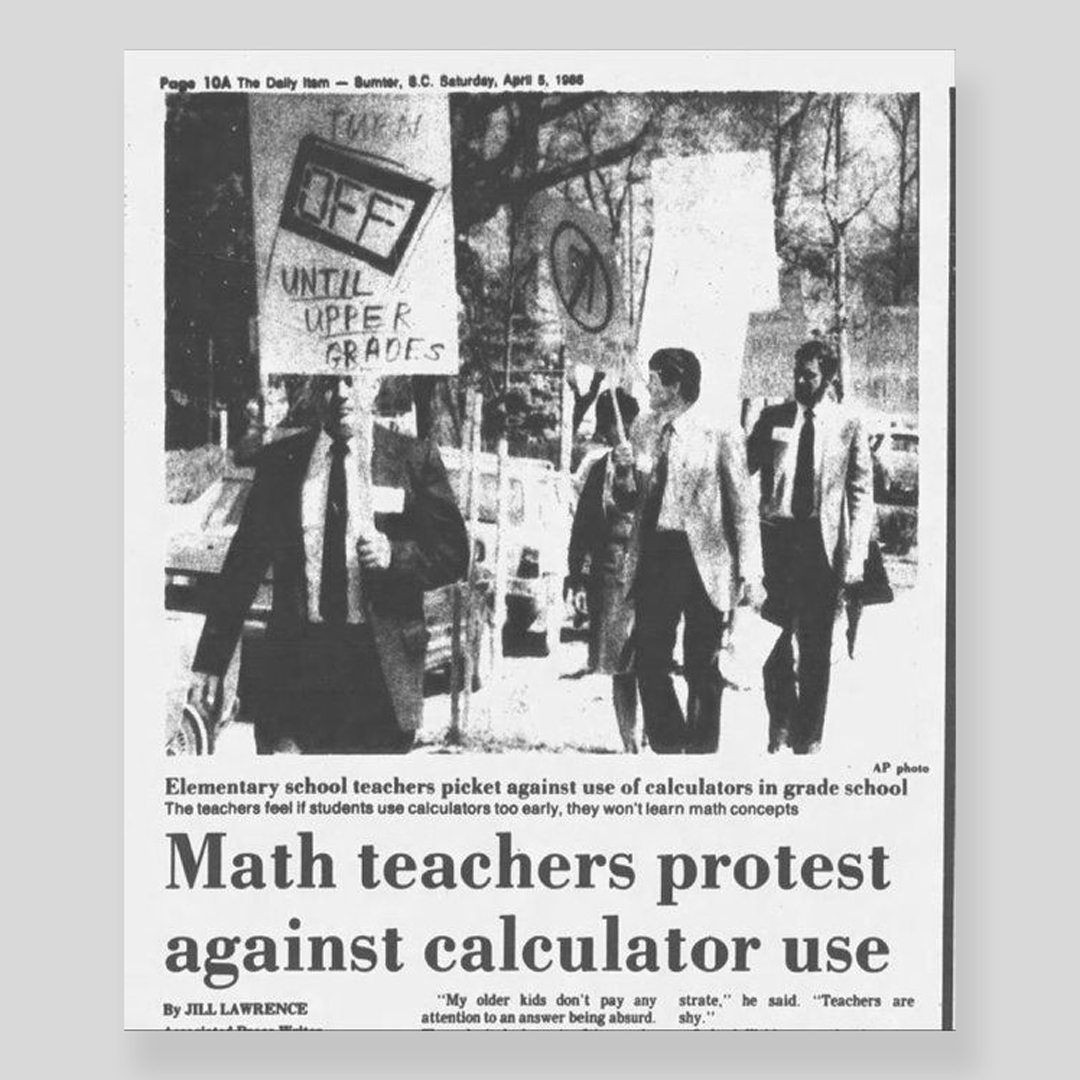This article investigates the societal implications of the AI revolution, a contemporary phenomenon characterized by rapid advancements in artificial intelligence and machine learning, by drawing comparisons with the calculator protests that arose in the 20th century upon the introduction of handheld calculators. The analysis highlights the similarities and differences between these two instances of technological disruption, revealing valuable insights into the challenges and opportunities associated with technological change. The article concludes by emphasizing the importance of learning from the past and adapting to the present in order to shape a future where technology serves as a tool for empowering humanity.
As we find ourselves amidst the AI revolution, it is instructive to examine historical instances of technological change and the societal reactions they elicited. A notable example is the introduction of handheld calculators in the 20th century, which generated considerable debate among mathematicians and educators. The following sections provide an overview of both the calculator protests and the AI revolution, elucidating the parallels and distinctions between the two events and exploring the lessons that can be derived from these technological disruptions.
The Calculator Protests of the 20th Century
The invention of the handheld calculator in the early 1960s constituted a significant milestone in the evolution of mathematics. As these devices became increasingly ubiquitous, concerns emerged among mathematicians and educators regarding their impact on learning and problem-solving. These apprehensions can be broadly categorized into three primary areas:
- Dependence on technology: Critics posited that the widespread use of calculators would result in a decline in mental arithmetic skills, as individuals would become excessively reliant on the devices for basic calculations.
- Educational impact: Educators speculated that calculators might impede the development of foundational mathematical skills and problem-solving abilities in students, as they would no longer be required to engage in critical thinking or navigate complex problems.
- Equity: The affordability and accessibility of calculators were perceived as potential drivers of socioeconomic disparities in educational outcomes, with economically privileged students enjoying a disproportionate advantage over their less affluent counterparts.
The AI Revolution
The ongoing AI revolution, characterized by rapid progress in artificial intelligence and machine learning, has given rise to a new array of concerns and debates. While the scope of the AI revolution far surpasses that of the calculator protests, some salient themes can be identified:
- Automation and job displacement: As AI systems increasingly assume tasks previously performed by humans, concerns have arisen regarding the potential loss of jobs and the necessity to retrain and adapt the workforce.
- Bias and ethics: The application of AI in decision-making has provoked discussions about the likelihood of biased algorithms and the ethical ramifications of delegating decisions to machines.
- Privacy and security: The substantial volume of data required to train AI systems has prompted questions about data privacy and the potential for misuse or abuse of personal information.
Comparative Analysis
Although the calculator protests and the AI revolution both stemmed from technological advancements, they differ in the magnitude and intricacy of the issues they generate. The calculator protests focused on the repercussions for education and problem-solving, whereas the AI revolution encompasses a more comprehensive range of concerns, including automation, bias, ethics, privacy, and security.
Nevertheless, the two events also share key similarities. In both cases, fears regarding dependence on technology and the impact on human skills and abilities persist. Furthermore, both the calculator protests and the AI revolution underscore the need to adapt educational systems to integrate new technologies and ensure that future generations possess the requisite skills to flourish in an ever-changing world.
Conclusion
A comparative examination of the AI revolution and the calculator protests provides valuable insights into the multifaceted implications of technological paradigm shifts. By analyzing the commonalities and divergences between these two events, we can enhance our understanding of the societal ramifications of technological advancements and devise strategies to address potential concerns while capitalizing on the associated benefits of innovation.
For instance, a similar comparative analysis between the Industrial Revolution and the Digital Revolution reveals how the sociopolitical, economic, and environmental challenges posed by these transformative events could be mitigated through effective policy-making, regulatory frameworks, and the development of new skills and competencies within the workforce (Mokyr, 2002; Schwab, 2016). Such comparative studies serve as a foundation for evidence-based decision-making in shaping policies and guidelines that foster a symbiotic relationship between humanity and technology.
In conclusion, the AI revolution and the calculator protests exemplify the transformative potential of technology as well as the challenges and opportunities it presents. Drawing from these historical comparisons, it becomes evident that a proactive approach to addressing the societal implications of technology is crucial in order to forge a future in which technology serves as a catalyst for human empowerment, rather than a divisive or detrimental force. By learning from past experiences and adapting to contemporary technological advancements, we can work towards a future that harmoniously integrates technology into the fabric of human life, maximizing its potential for the betterment of society as a whole.


